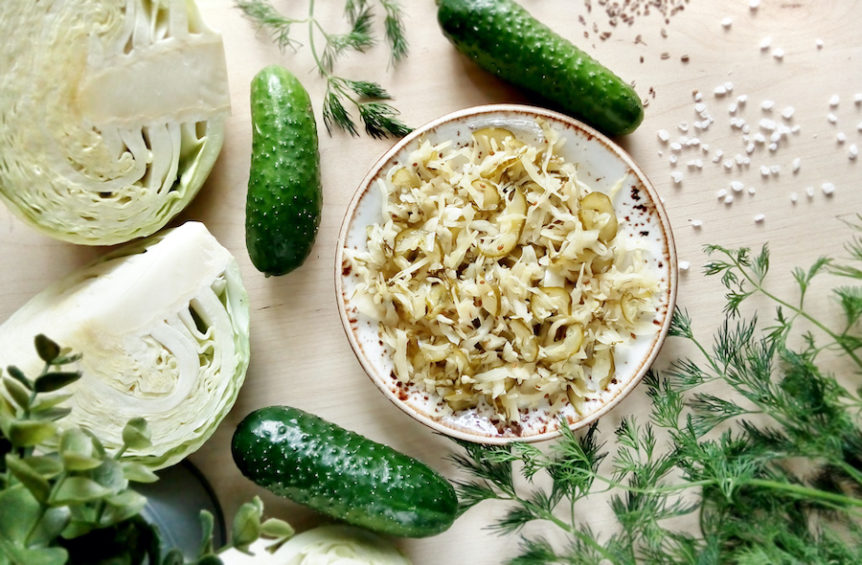Happy February! It’s the month of love, and boy do we need it! Regardless of how you feel about Valentine’s Day, it’s a good opportunity to pour lots of love on your favorite people (socially distanced if needed) and yourself. You’ve gotten this far, and brighter days are on the horizon.
With that, I have some good news and some bad news. We’ll start with the good news: if you don’t have a special Valentine this year, I have one for you! This generous lover is literally your perfect match. It already knows you inside and out, and it lives and breathes for your benefit. Sounds romantic, right? Well, now for the bad news. This “Valentine” is a stage five clinger. And worse, there are about 100 trillion of them. EEK! Don’t worry, back to some good news: these clingy lovers are microscopic, and they really don’t expect much. Skip the roses and chocolate. They are really easy to please and are pretty low maintenance.
Hopefully by now you know that I am talking about your gut bacteria, also referred to as your microbiome. These microbes couldn’t be more important, or more fascinating. And they definitely deserve our love. We are constantly learning more and more about how they work, how they have evolved, their role in health and disease, and how we can nourish them. I received the book Missing Microbes by Martin J Blaser, MD as a holiday gift and have been chipping away at it over the past few weeks. I consider myself to be pretty well-versed in the microbiome and gut health, but I’m learning so much and wanted to share some fun facts. Ready to have your mind blown? Let’s go!
Microbiome fun facts
- The human body is composed of about 30 trillion human cells, but plays host to about 100 trillion friendly bacterial and fungal cells. So, in many ways we are quite literally made up of microbes.
- The total weight of all of the bacteria living in the human body is about three pounds – about the same weight as your brain.
- The majority of bacteria in the human body resides in the large intestine. As you move up the digestive tract, the amount of bacteria decreases. So there is less bacteria in the small intestine than the large intestine, less bacteria in the stomach than the small intestine, and so on.
- The bacteria in your large intestine are experts at breaking down food products that your upper digestive organs haven’t been able to digest – things like the skin of an apple or the dense fibers in some vegetables. By breaking them down, bacteria make products called short chain fatty acids which both nourish our good bacteria and provide fuel for the cells of our large intestine. So we scratch their back, they scratch ours, so to speak.
- Up to 15% of the calories in the food that we eat is actually extracted by the bacteria in our guts, leading us to believe that there is an important connection between a healthy microbiome and a healthy weight.
- The vaginal microbiome shifts throughout the menstrual cycle, meaning that certain families of bacteria dominate at certain times of the month and others dominate at other times. Scientists are still trying to figure out why this happens and how it contributes to women’s health. Stay tuned!
- Lactobacilli bacteria are an important inhabitant of the vagina, and during pregnancy the number of lactobacilli increases. When a baby passes through the vagina/birth canal during delivery, he/she gets exposed to all of these important bacteria in a crucial inoculation process. The coolest part? Think about the basis of the word “Lactobacilli”, lacto = milk. Lactobacilli are used to break down the lactose in mom’s breast milk. How perfect is that!
- A recent study in the esteemed medical journal BMJ found that hospitalized patients with COVID-19 had lower levels of protective gut bacteria compared to patients without COVID-19, suggesting that having a healthy microbiome may help to prevent COVID-19. Further, in those patients with COVID-19, having less protective gut bacteria was associated with more severe symptoms.
As if all of that wasn’t enough, here’s a short list of other things that our resident bacteria are busy doing every day:
- Synthesizing vitamins
- Digesting lactose
- Making amino acids
- Regulating blood pressure
- Metabolizing drugs
Tips for good gut health
So how can you show your microbiome some love this Valentine’s Day and every day?
- Eat a diet that is full of high fiber foods that good bacteria thrive on – vegetables, fruit, legumes, whole grains.
- Include PRE-biotic foods in your diet – these are foods that our gut bacteria really love. Examples include raw or cooked onions, raw garlic, jicama, dandelion greens, leeks, asparagus. Resistant starches are another category of prebiotic foods that nourish our microbiome. Examples are whole grains, potatoes or sweet potatoes that have been cooked and then cooled.
- Avoid unnecessary antibiotics. Even one course of antibiotics can wipe out whole populations of good bacteria, and we are living through an epidemic of antibiotic overuse (more on that in Missing Microbes). Only take antibiotics if they are absolutely needed. The common cold, flu-like symptoms, and many cases of bronchitis, gastritis and sinusitis are caused by viruses and do not need to be treated with antibiotics. Trust your healthcare provider if they tell you that you don’t need antibiotics.
- Decrease sugar – it can feed harmful bacteria and allow them to take control in your gut.
- Eat fermented foods. Fermented foods are full of good bacteria that can help to support your microbiome. Examples are fermented sauerkraut, fermented pickles and other veggies, kimchi, active culture yogurt, kefir, and kombucha tea.
- Consider a probiotic. Not everyone needs one, but you may consider taking a supplemental probiotic product if you have digestive symptoms, have been on an antibiotic recently, or have certain medical issues that have been shown to improve with probiotics on board. The literature around this topic is growing every day. Speak to your medical provider to see if a probiotic is right for you.




Comments 1
Great read! How do I know if a probiotic is worth trying?
I wouldn’t say I have chronic gut problems but would say there is bloating, looser stool here and there (not liquid/just looser..gross I know but figured you’d appreciate the description!).
I’m open to suggestion and I know my nutrition isn’t on point in the winter months..definitely struggle more January-March with cold temps/emotional-coping eating to grind through winter. I do have a 4 ounces of green leaf lettuce, 2-4 ounces of baby carrots, hummus, raw peppers or jicama daily..but doubt I am getting 800 grams of fresh fruit/veggies in the winter months. And definitely a bit more comfort refined carbs than I would like….
Feel free to reply to the patient portal if that’s easier.
KMalz 😀